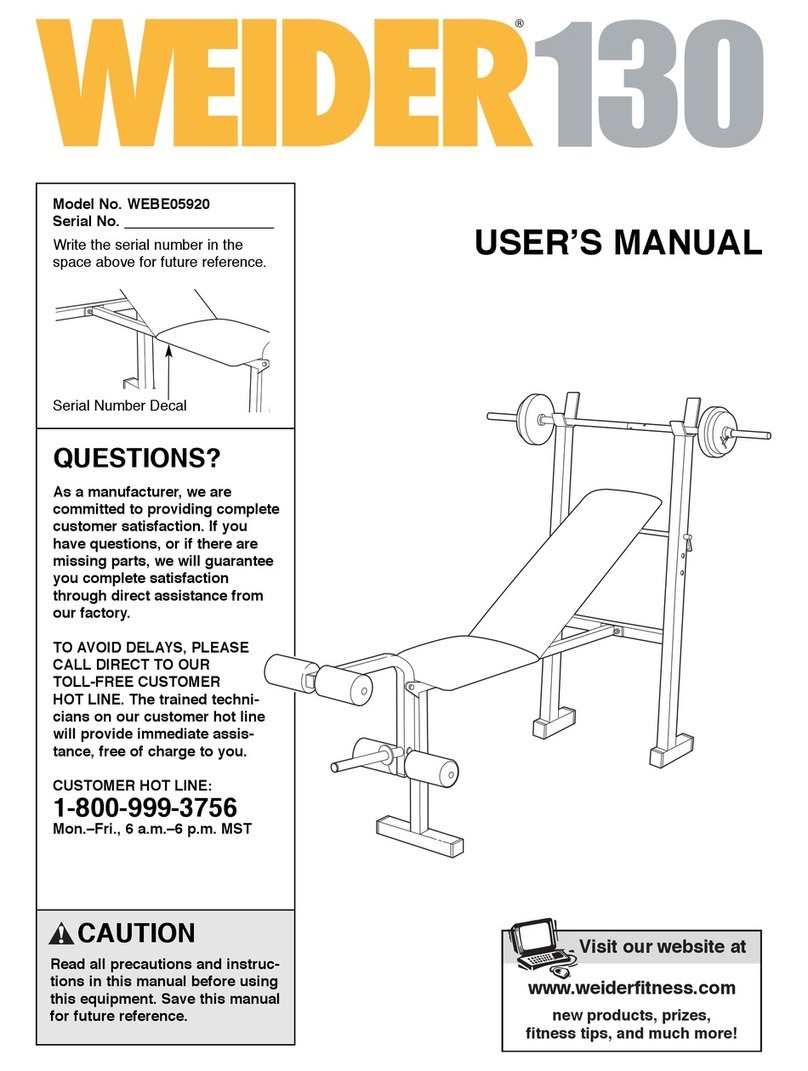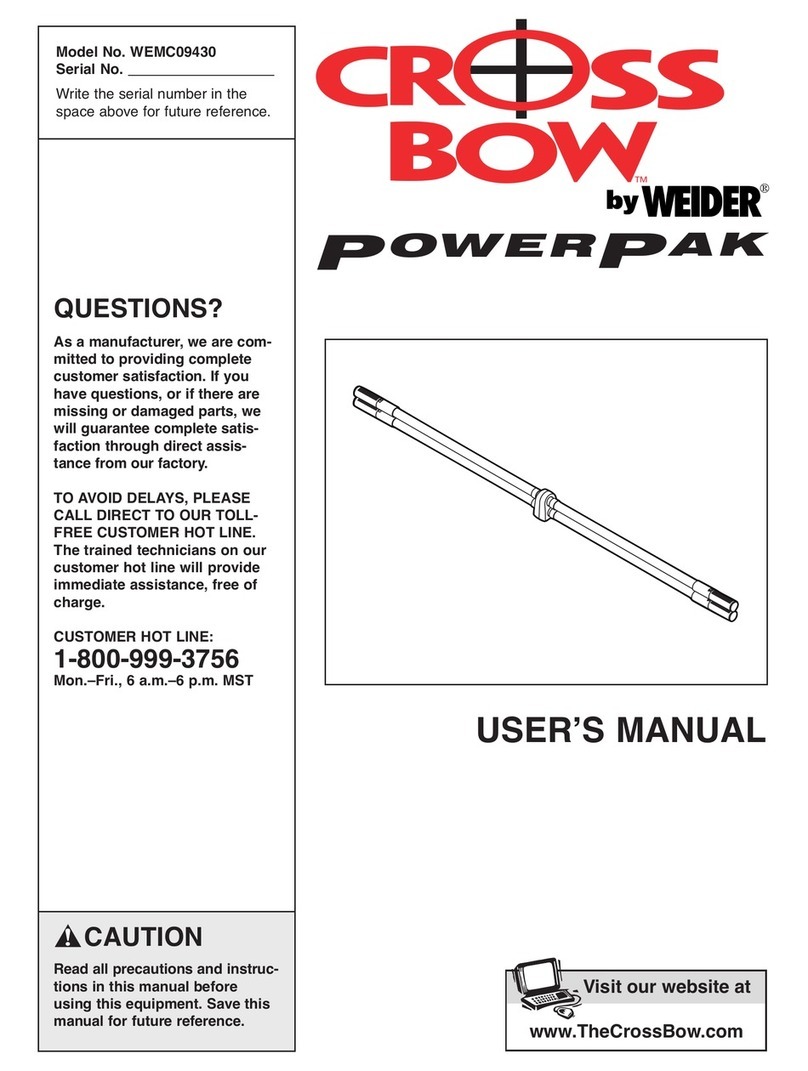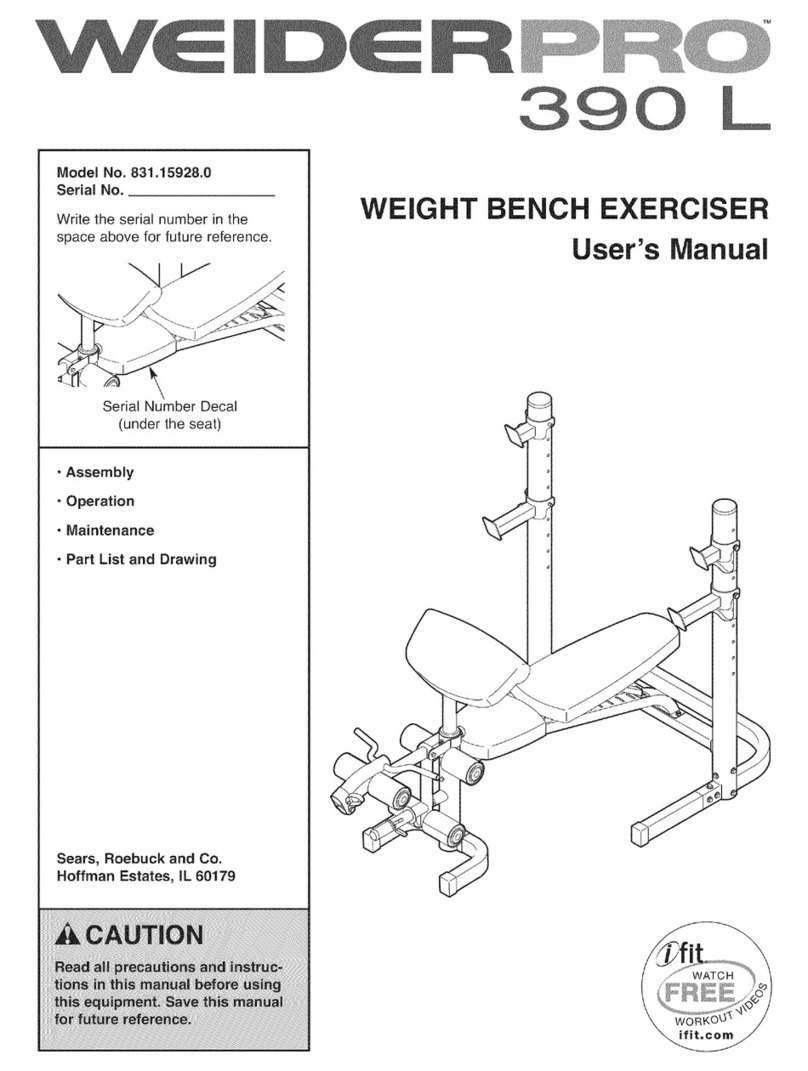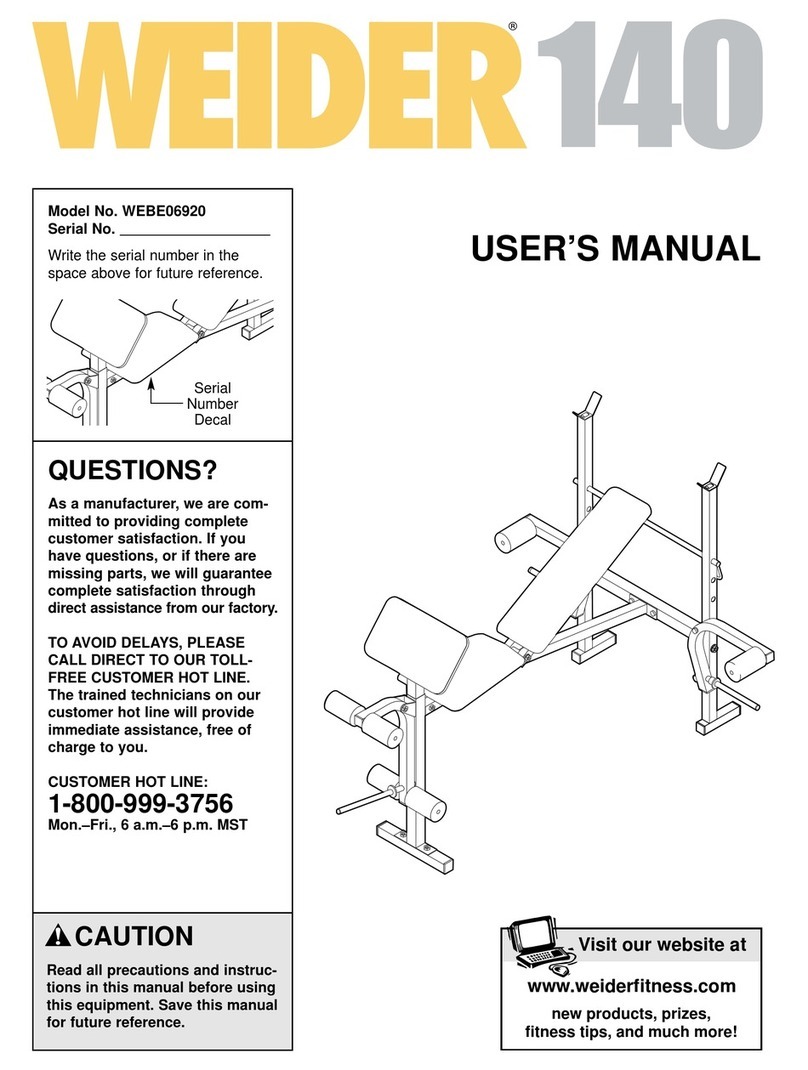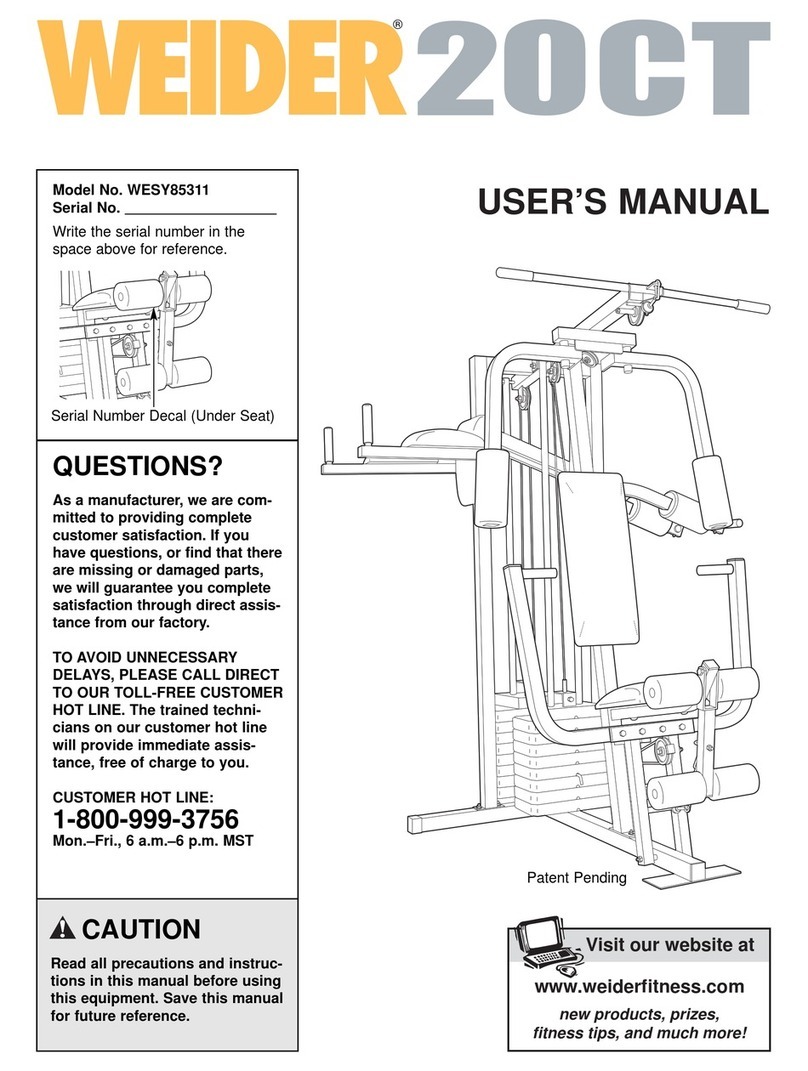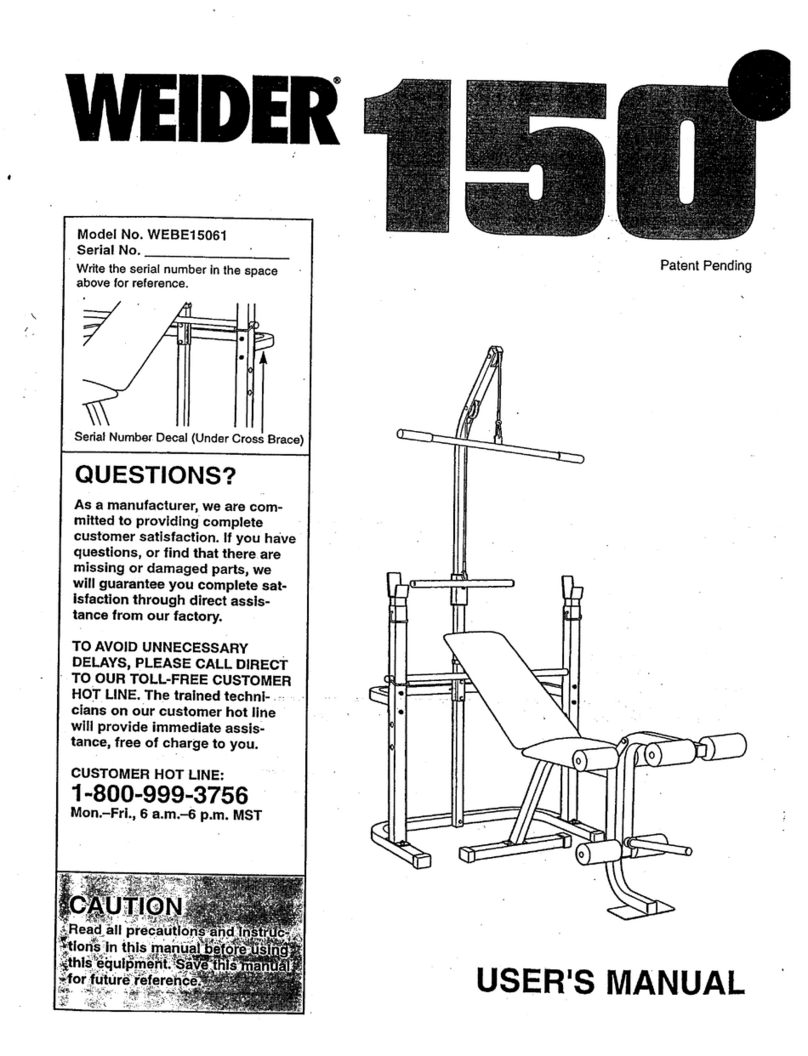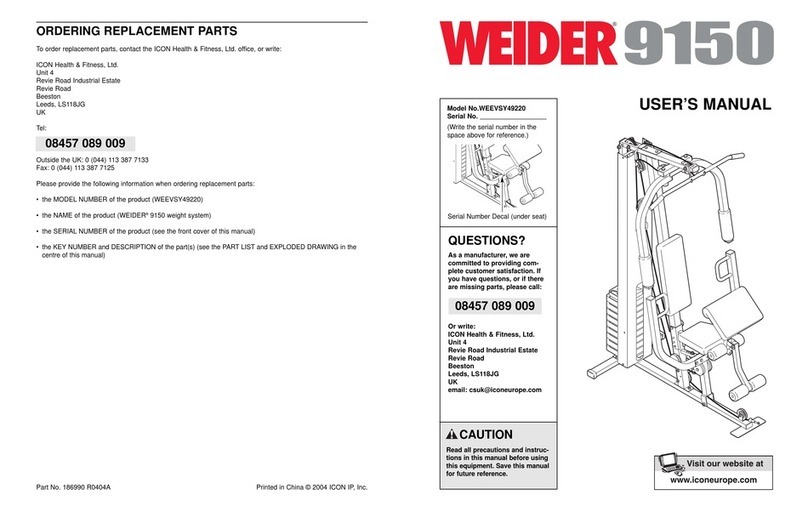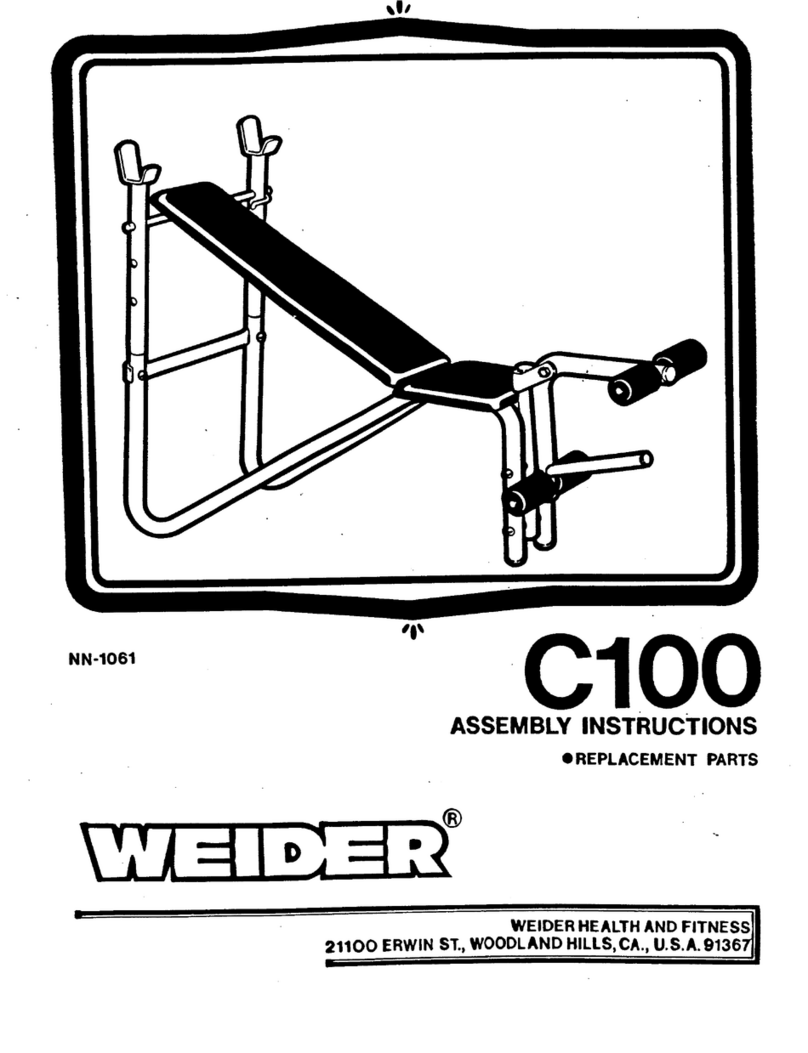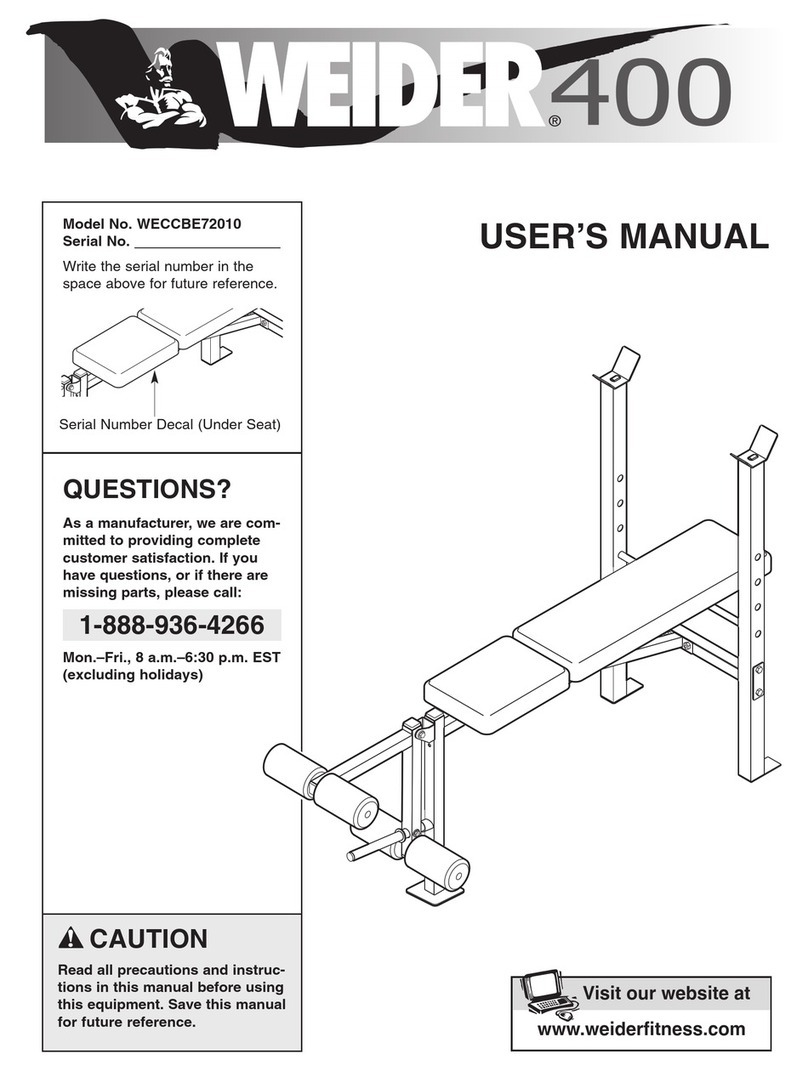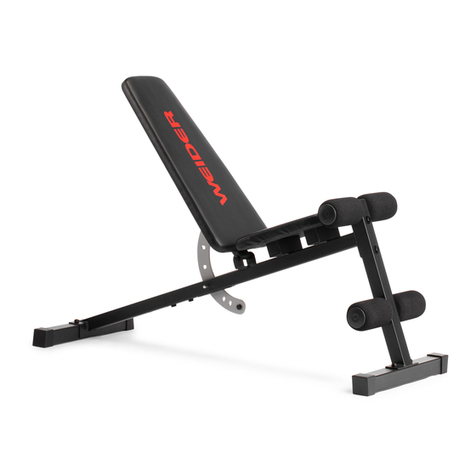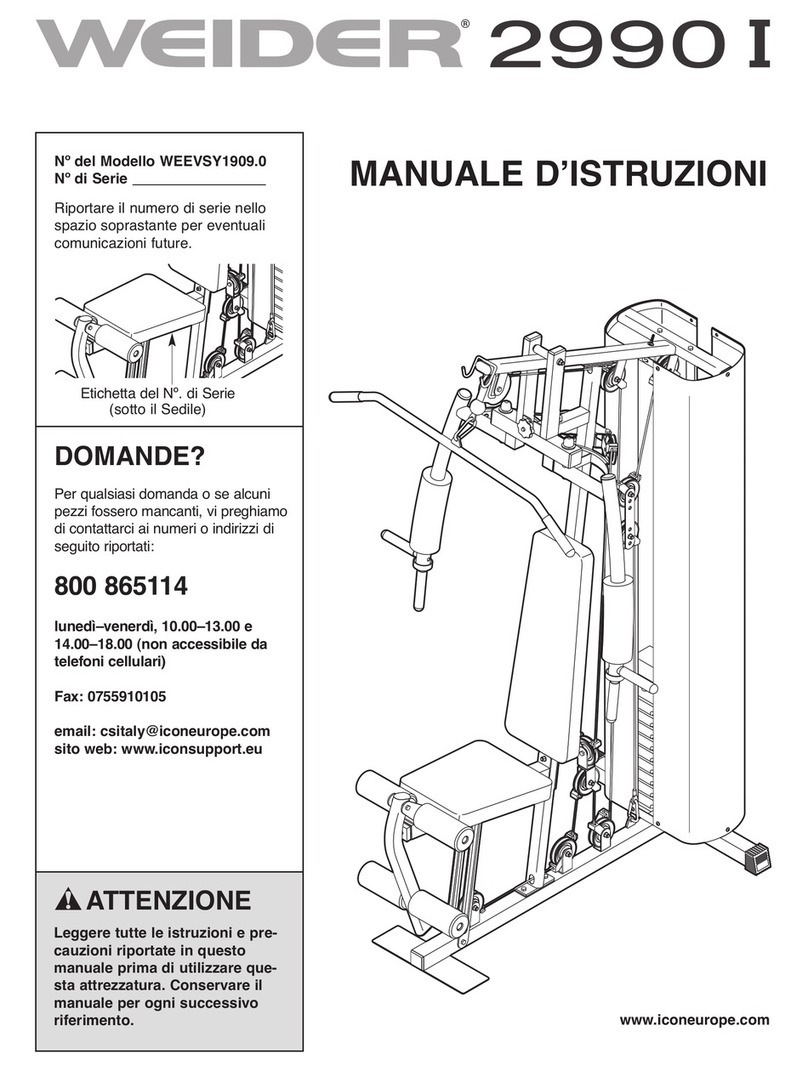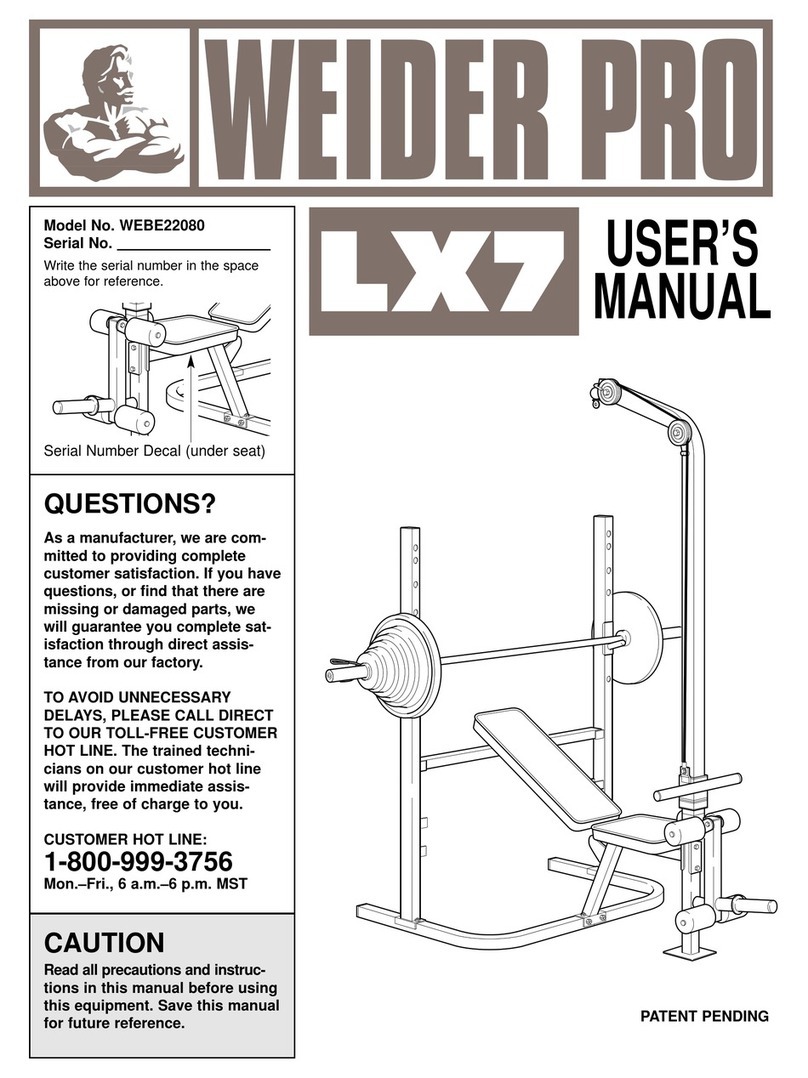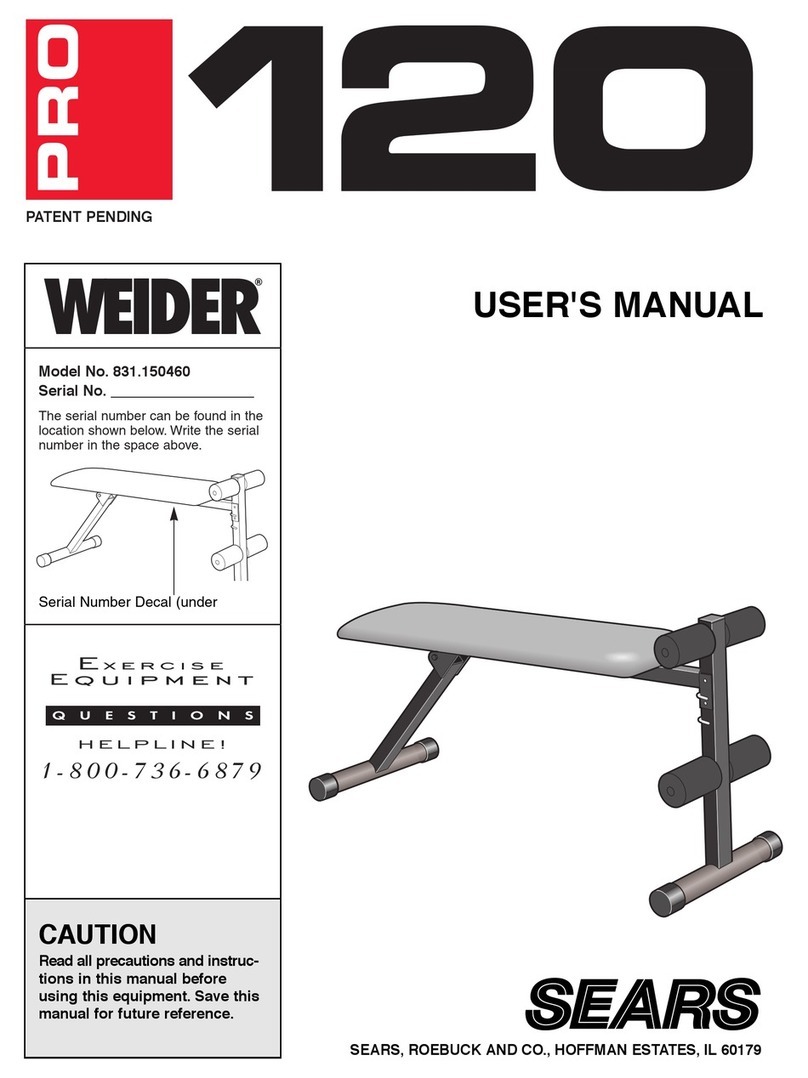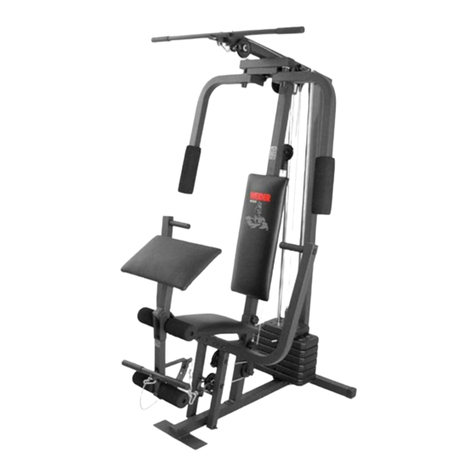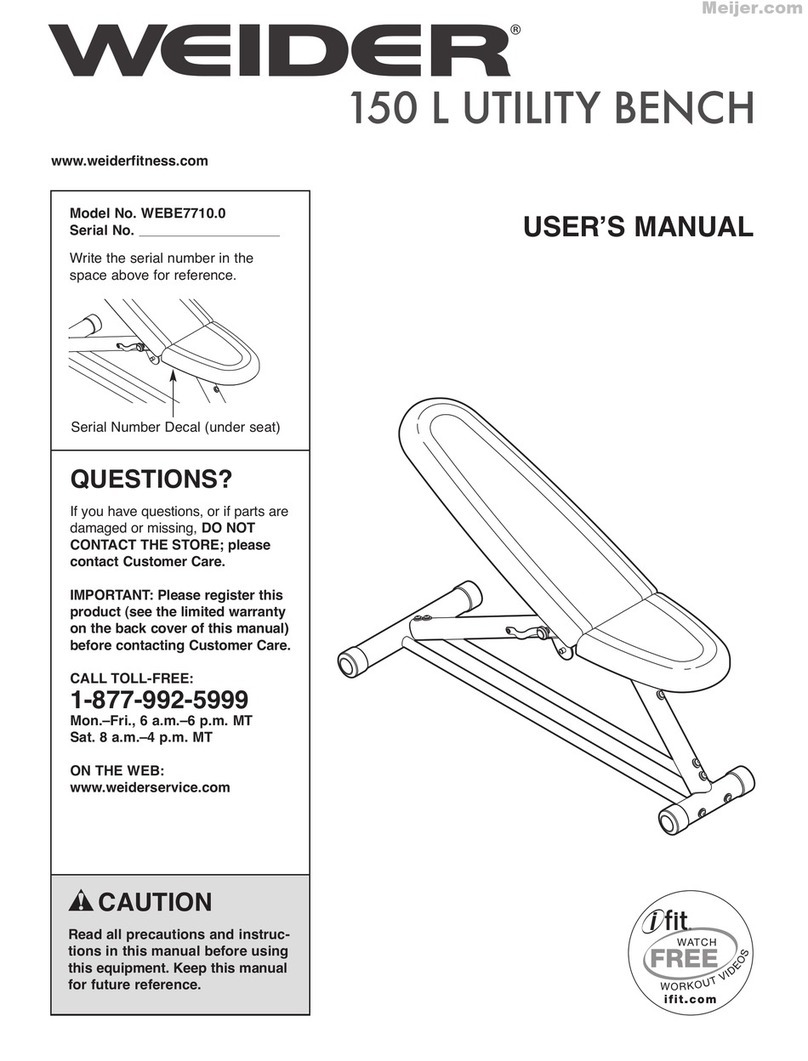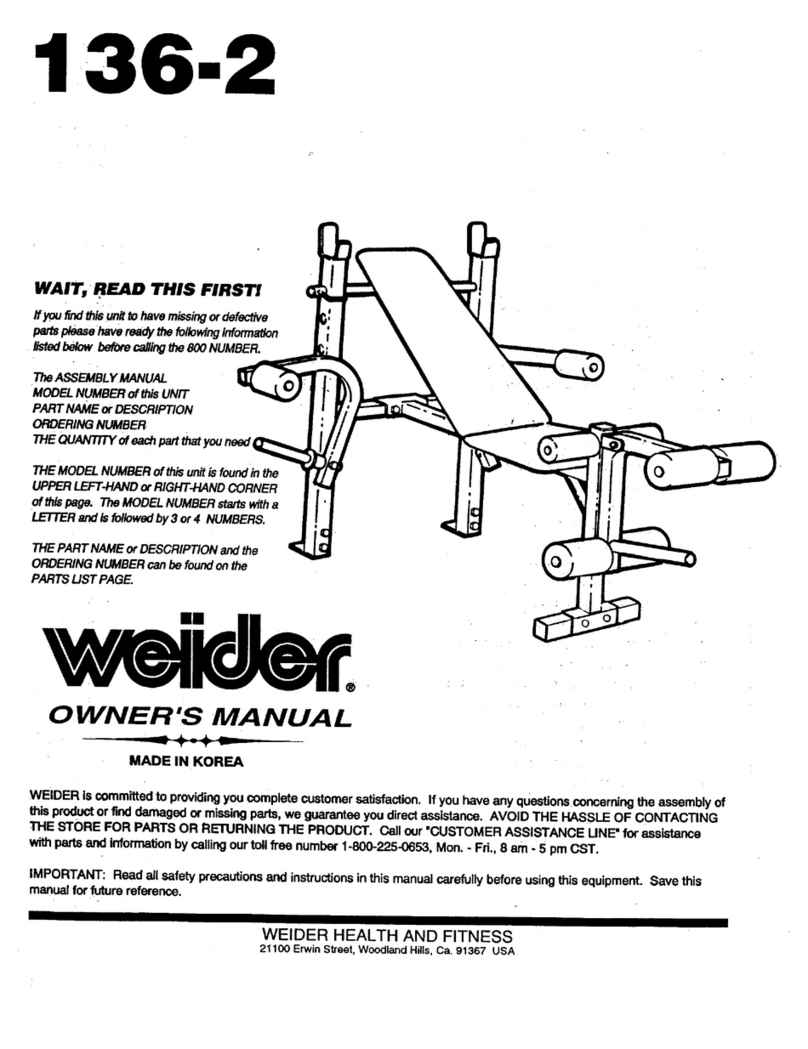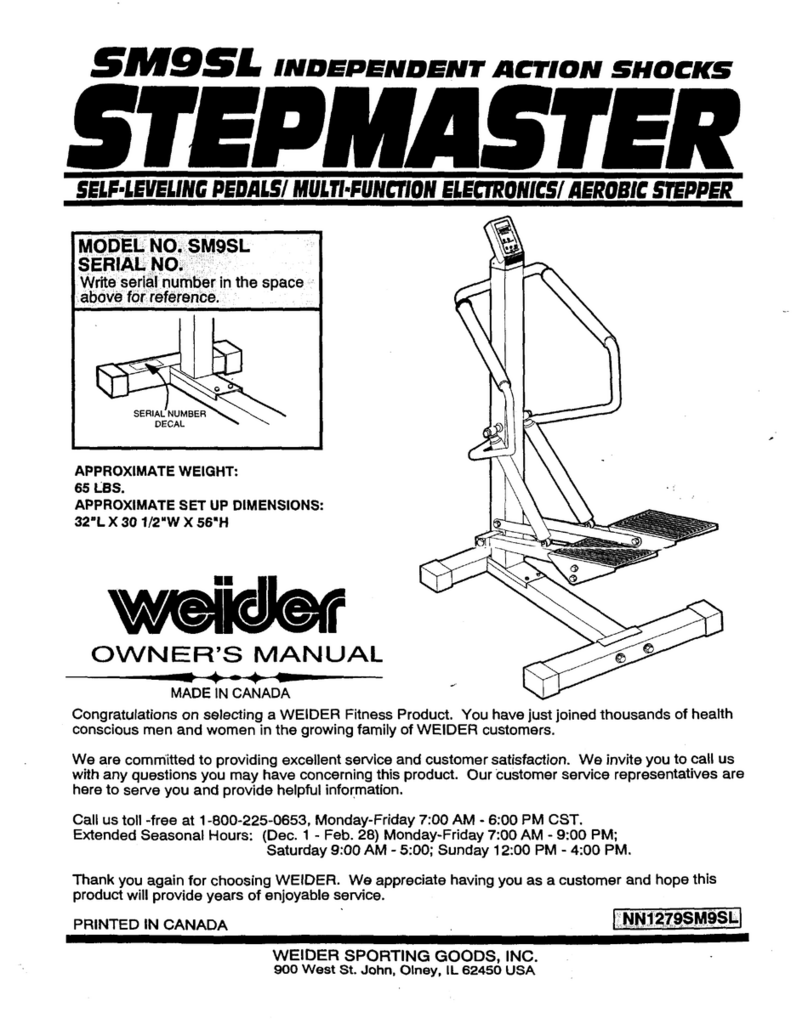IMPORTANT PRECAUTIONS
'_,-_WARN ING: To reduce the risk of serious injury, read the following important precau-
tions before using the weight bench.
1. Read all instructions in this manual before
using the weight bench. Use the weight
bench only as described in this manual.
2. It is the responsibility of the owner to ensure
that all users of the weight bench are ade-
quately informed of all precautions.
3. The weight bench is Intended for home use
only, Do not use the weight bench In any
commercial, rental, or institutional setting.
11. Do not use a barbell that is longer than six
feet with the weight bench.
4. Use the weight bench only on a level surface.
12.
13.
Always be sure there is an equal amount of
weight on each side of your barbell when
you are using it, Always keep some weight
on both ends of the barbell when adding or
removing weights to prevent the barbell from
tipping.
When you are using the leg lever, place a
barbell with the same amount of weight on
the weight rests to balance the bench_
Cover the floor beneath the weight bench to
protect the floor. 14. Always exercise with a partner. When you
5. Make sure all parts are properly tightened
each time the weight bench is used. Replace
any worn parts immediately.
6. Make sure the set screws attaching the
Olympic adapters are properly tightened
each time the adapters are used.
7, Keep children under 12 and pets away from
the weight bench at all times.
are performing bench press exercises, your
partner should stand behind you to catch the
barbell if you cannot complete a repetition,
15. Make sure that the adjustment knobs are
inserted completely and tightened into the
uprights before beginning any exercise.
16. When you put weight on the weight rests,
make sure you put at least ten pounds on the
leg lever to balance the weight bench.
8, Always wear athletic shoes for foot protec-
tion while exercising.
9. Keep hands and feet away from moving
parts.
10. The weight bench is designed to support a
maximum user weight of 300 pounds, and a
maximum total weight of 610 pounds. Do not
place more than 310 pounds, including a bar-
bell and weights, on the weight rests. Do not
place more than t50 pounds on the leg lever.
Note: The weight bench does not include a
barbell or weights,
17. Always remove the curl post from the front
leg before performing leg curls with the leg
lever.
18. Do not sit on the top end of the backrest;
this will cause the weight bench to tip.
18. If you feel pain or dizziness at any time while
exercising, stop immediately and begin cool-
ing down.
WARNING: Before beginning this or any exercise program, consult your physician. This
is especially important for persons over the age of 35 or persons with pre-existing health problems.
Read all instructions before using. Sears assumes no responsibility for personal injury or property
damage sustained by or through the use of this product.
3

